Abstract
The large body of literature and techniques generated by mammalian toxicity studies provides a conceptual and technical framework within which the absorption, fate, and disposition of xenobiotics in aquatic organisms can be studied. This review emphasizes the similarities and differences between mammalian and aquatic systems, e.g., lung vs. gill as site of absorption and toxicity. These must be taken into consideration when designing aquatic toxicity studies. Studies of phenol red in dogfish shark as an example show physiologic-based pharmacokinetic modeling to be a useful tool for investigating and eventually predicting species differences in xenobiotic disposition and drug differences within the same species. This discussion demonstrates that both laboratory and modeling procedures are now available to carry out sophisticated studies of xenobiotic fate and disposition in fish. Such studies are needed to pinpoint sites and mechanisms of pollutant toxicity in aquatic organisms.
Full text
PDF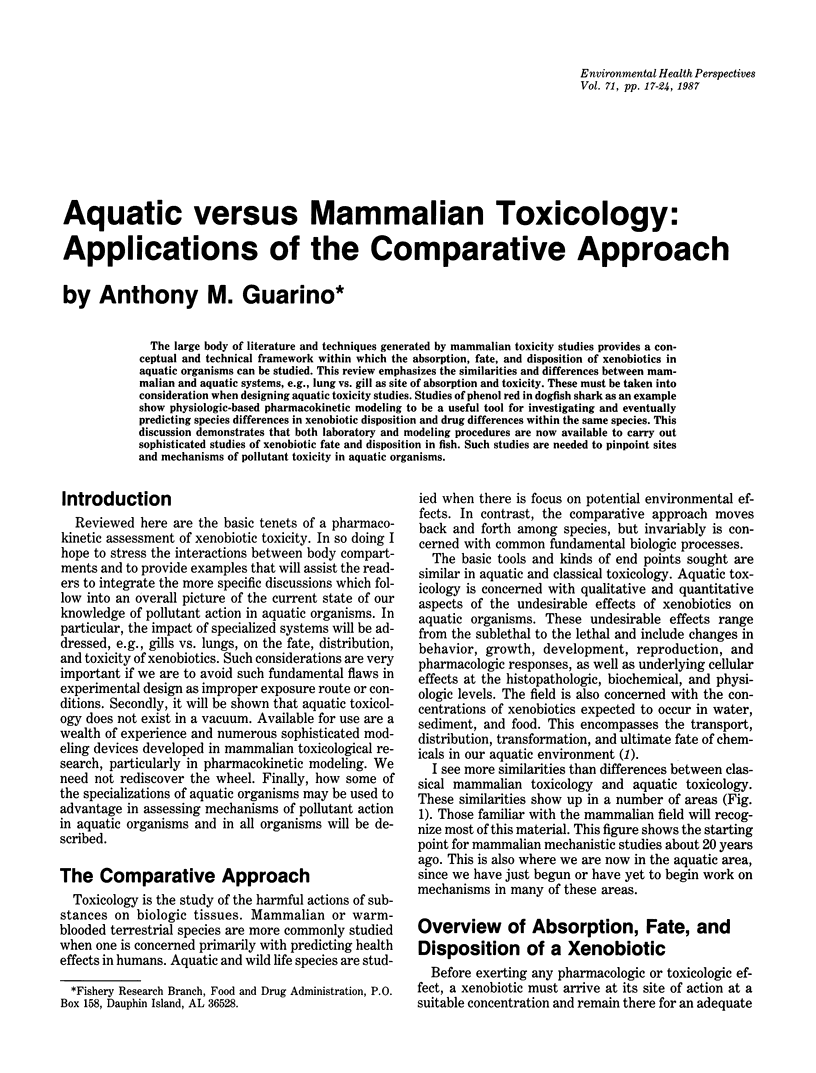
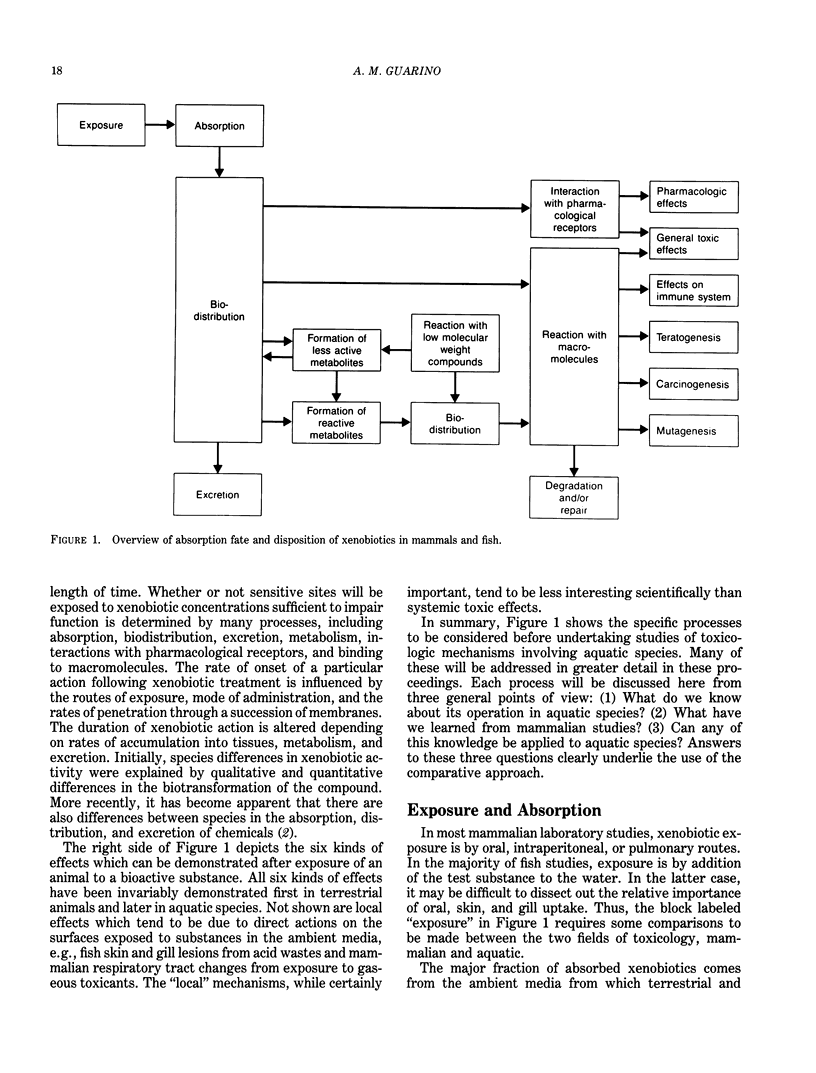

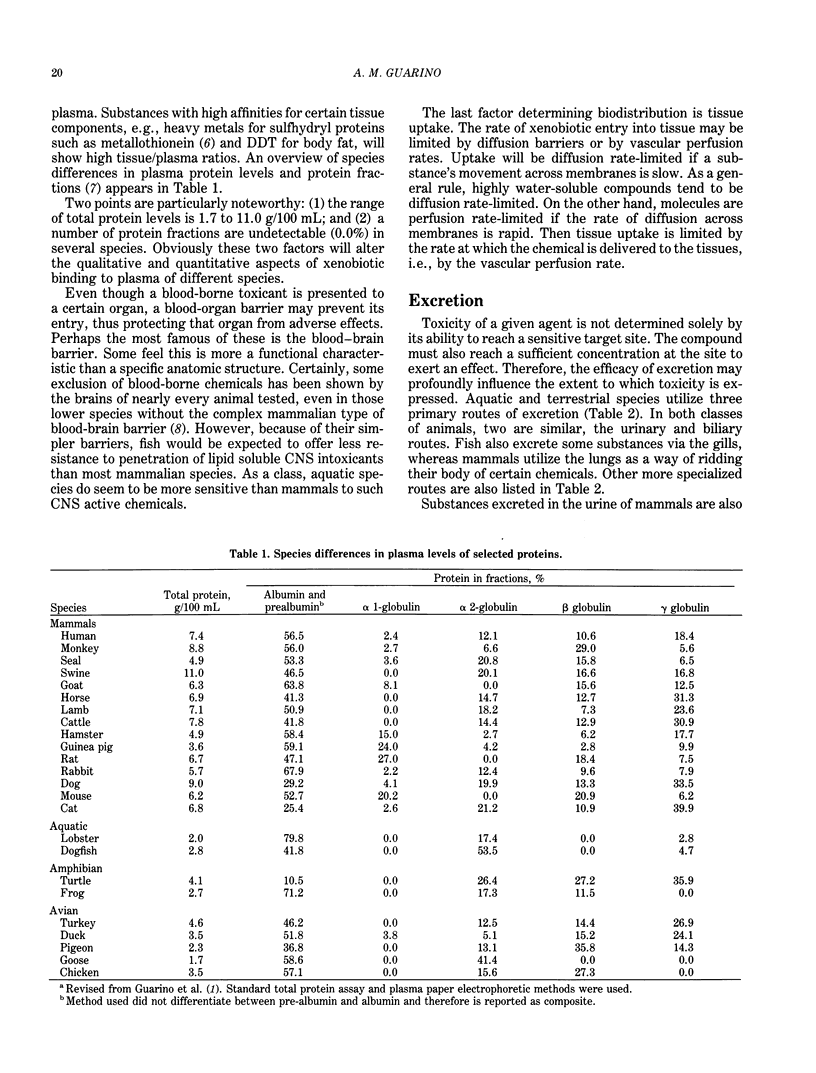
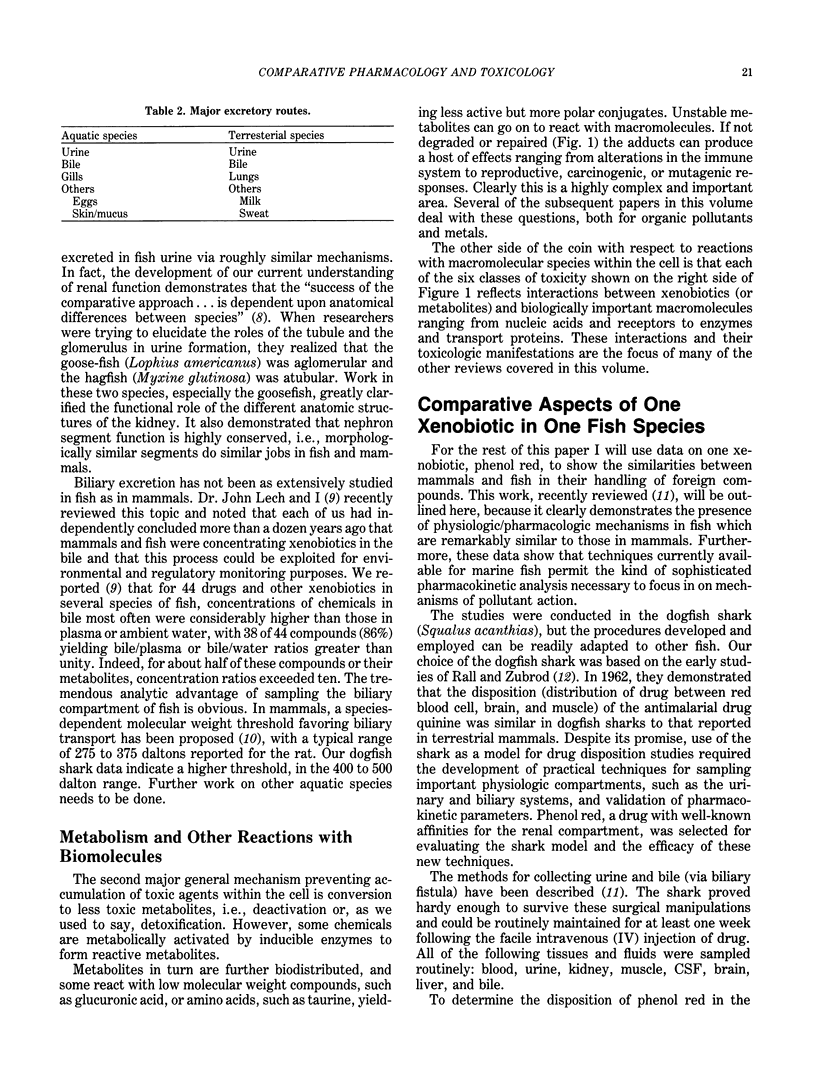
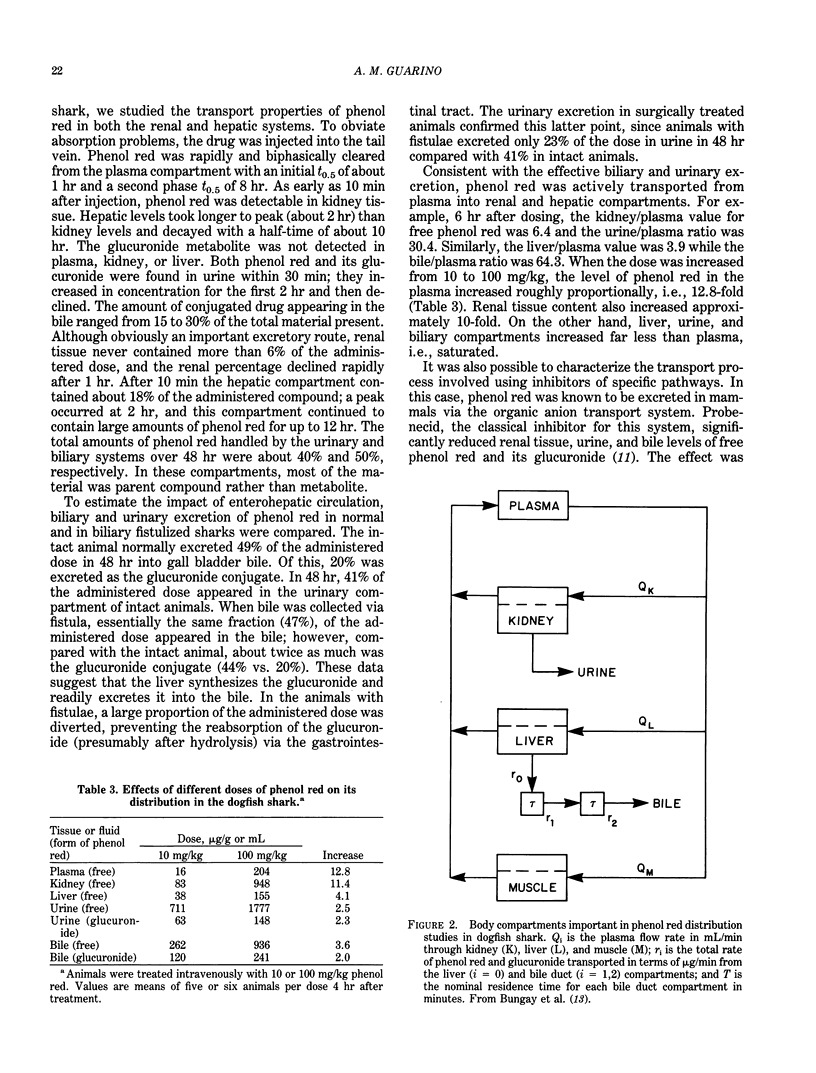
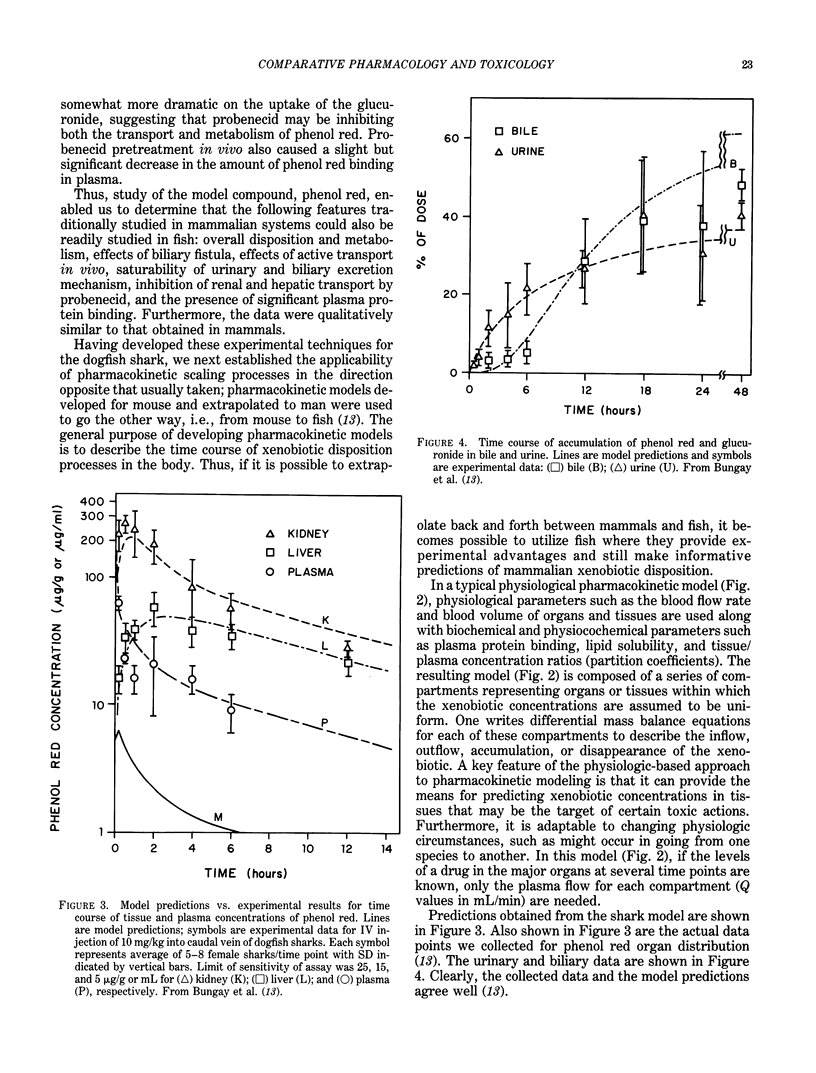
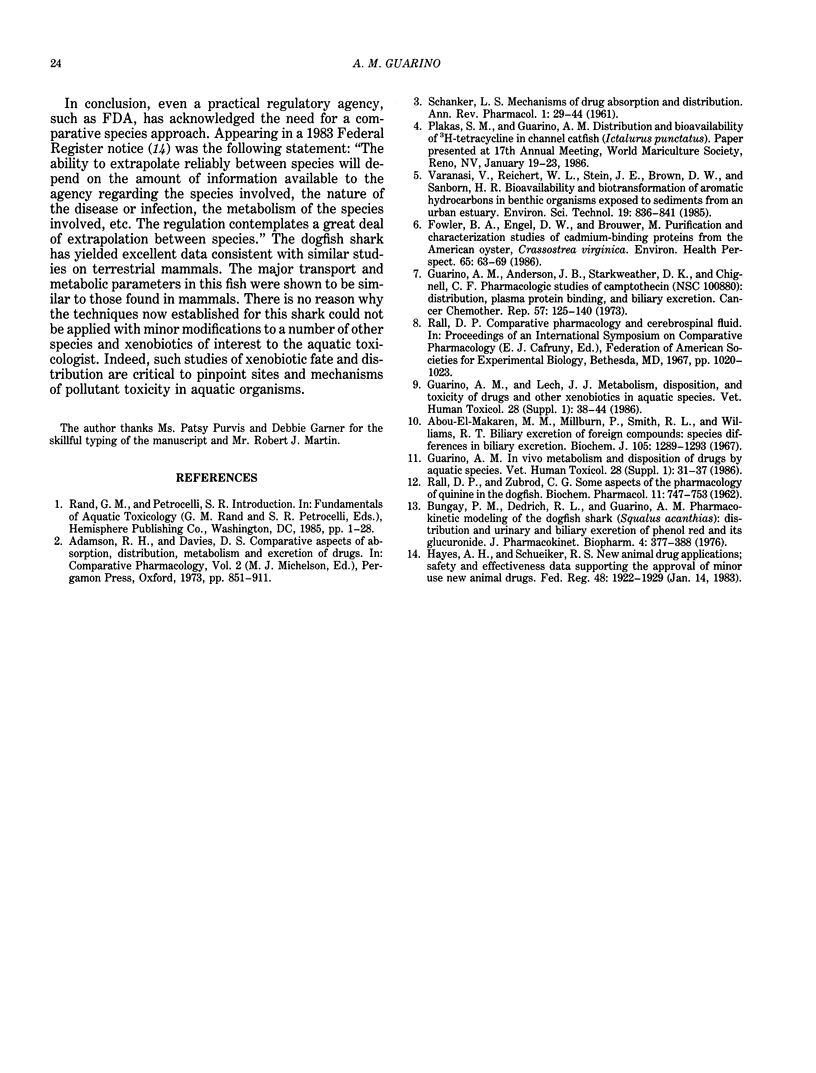
Selected References
These references are in PubMed. This may not be the complete list of references from this article.
- Abou-El-Makarem M. M., Millburn P., Smith R. L., Williams R. T. Biliary excretion in foreign compounds. Species difference in biliary excretion. Biochem J. 1967 Dec;105(3):1289–1293. doi: 10.1042/bj1051289. [DOI] [PMC free article] [PubMed] [Google Scholar]
- Bungay P. M., Dedrick R. L., Guarino A. M. Pharmacokinetic modeling of the dogfish shark (Squalus acanthias): distribution and urinary and biliary excretion of phenol red and its glucuronide. J Pharmacokinet Biopharm. 1976 Oct;4(5):377–388. doi: 10.1007/BF01062827. [DOI] [PubMed] [Google Scholar]
- Fowler B. A., Engel D. W., Brouwer M. Purification and characterization studies of cadmium-binding proteins from the American oyster, Crassostrea virginica. Environ Health Perspect. 1986 Mar;65:63–69. doi: 10.1289/ehp.866563. [DOI] [PMC free article] [PubMed] [Google Scholar]
- Guarino A. M., Anderson J. B., Starkweather D. K., Chignell C. F. Pharmacologic studies of camptothecin (NSC-100880): distribution, plasma protein binding, and biliary excretion. Cancer Chemother Rep. 1973 Apr;57(2):125–140. [PubMed] [Google Scholar]
- Guarino A. M. In vivo metabolism and disposition of drugs by aquatic species. Vet Hum Toxicol. 1986;28 (Suppl 1):31–37. [PubMed] [Google Scholar]
- Guarino A. M., Lech J. J. Metabolism, disposition, and toxicity of drugs and other xenobiotics in aquatic species. Vet Hum Toxicol. 1986;28 (Suppl 1):38–44. [PubMed] [Google Scholar]
- RALL D. P., ZUBROD C. G. Some aspects of the pharmacology of quinine in the dogfish. Biochem Pharmacol. 1962 Aug;11:747–753. doi: 10.1016/0006-2952(62)90042-4. [DOI] [PubMed] [Google Scholar]


